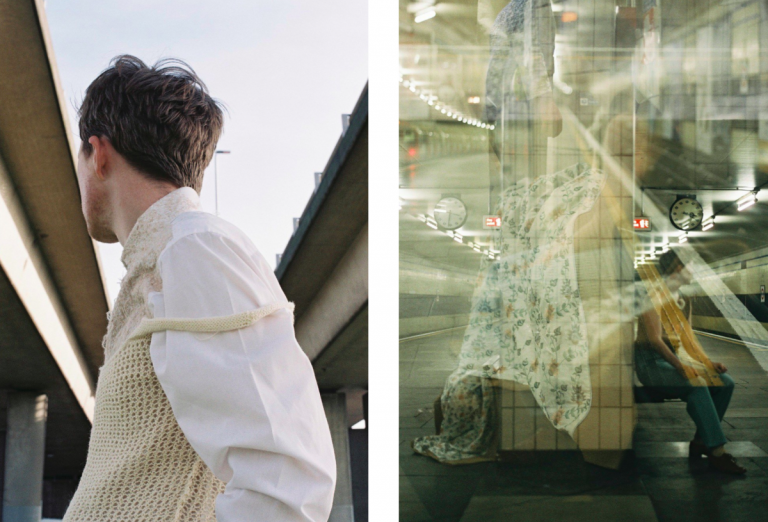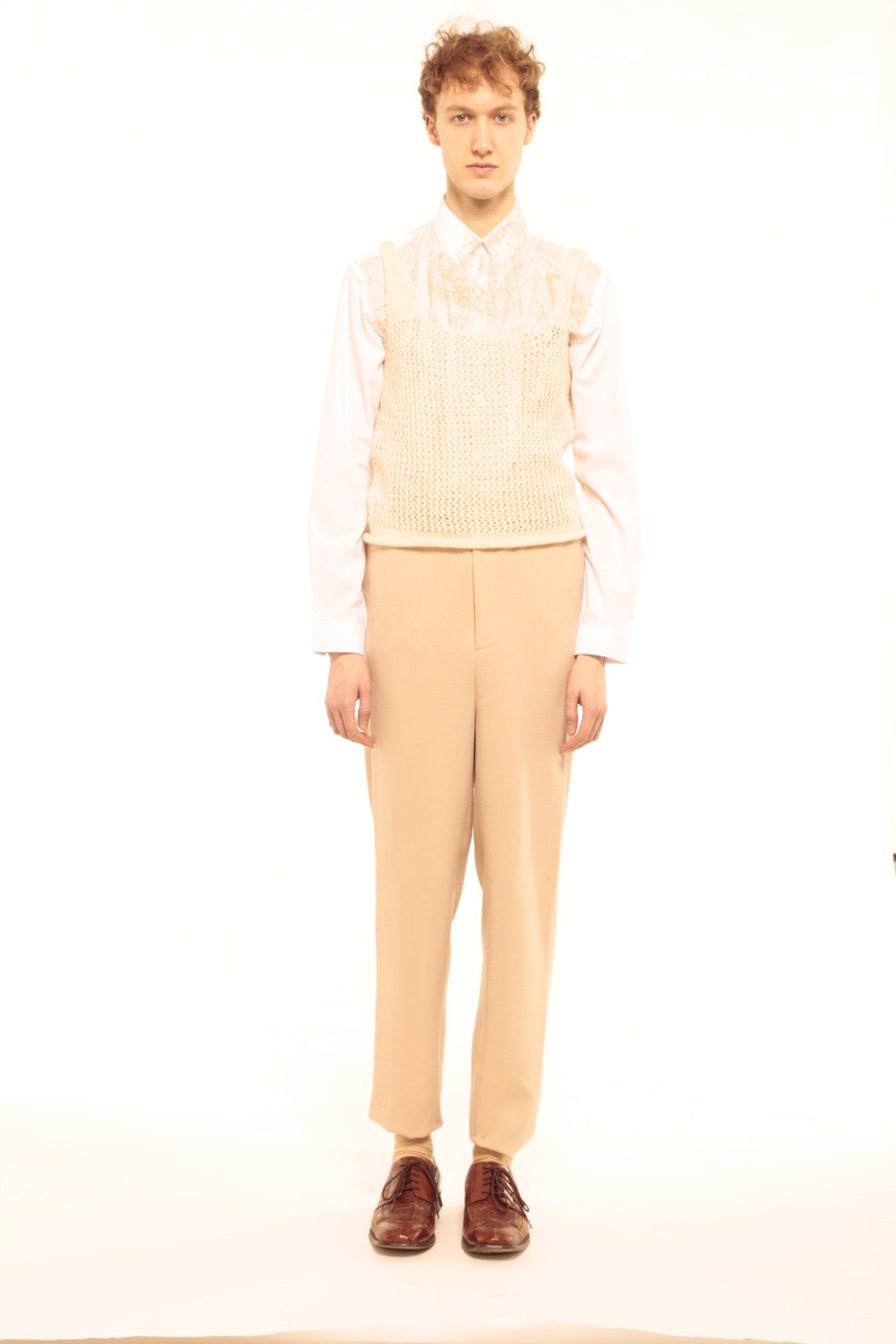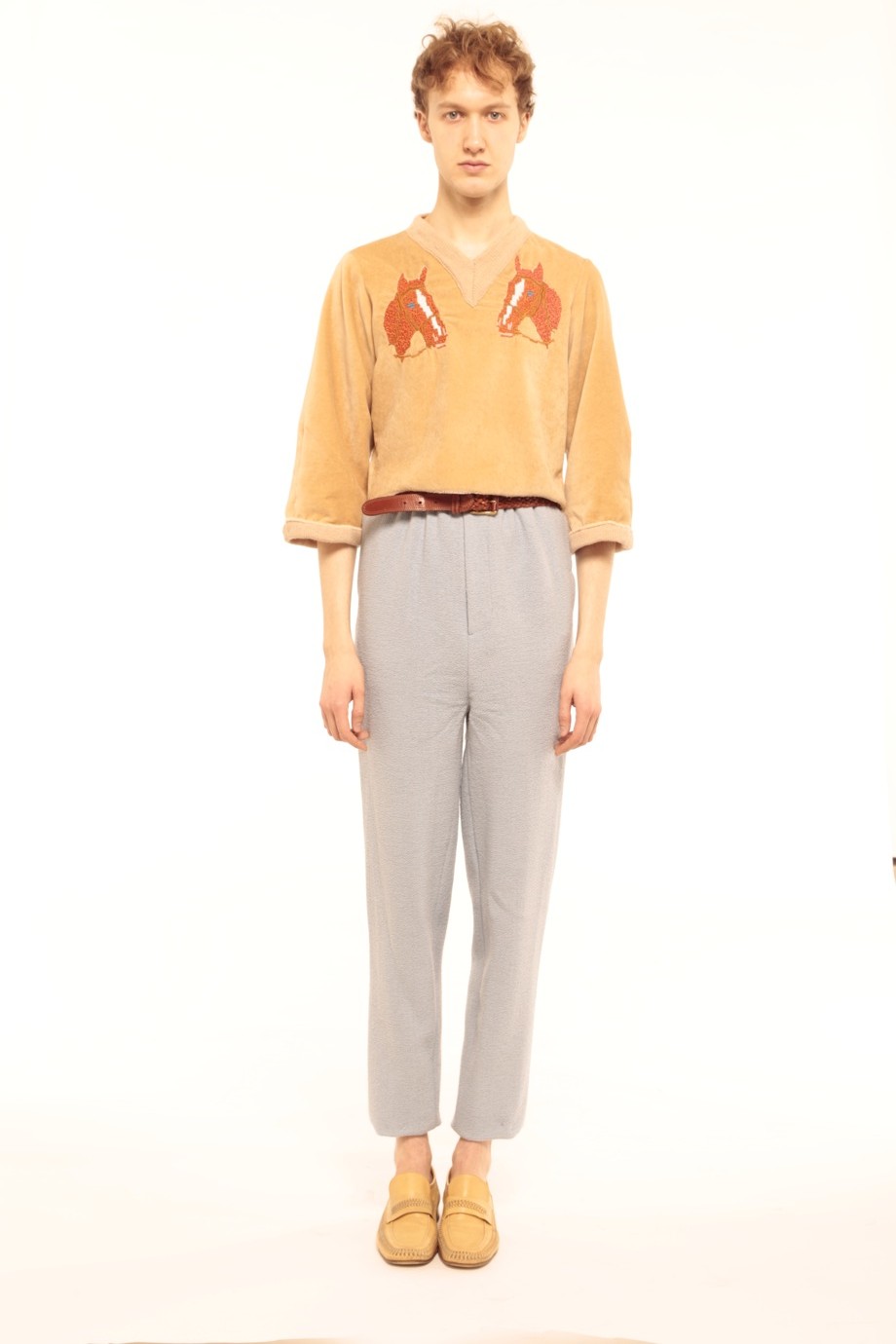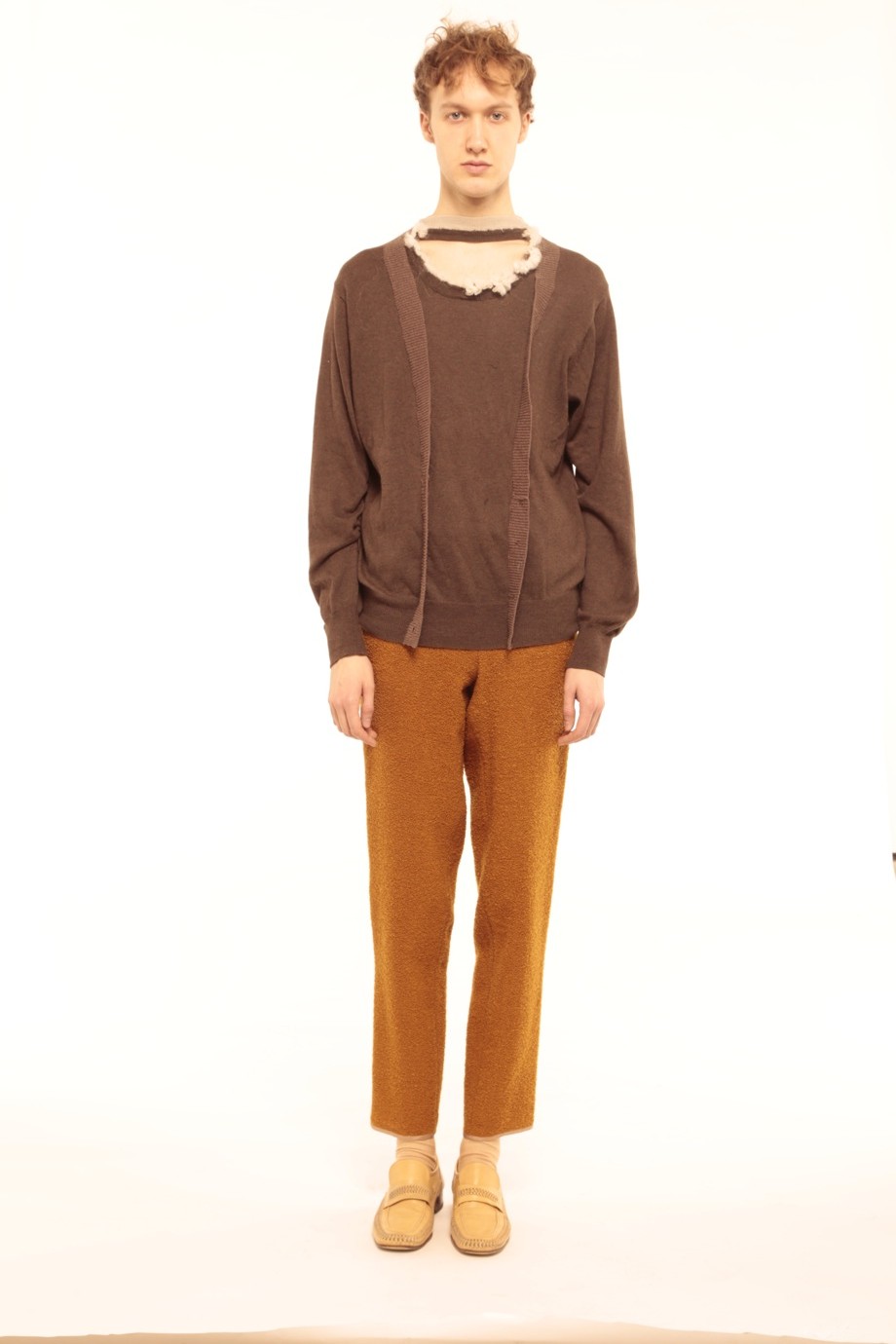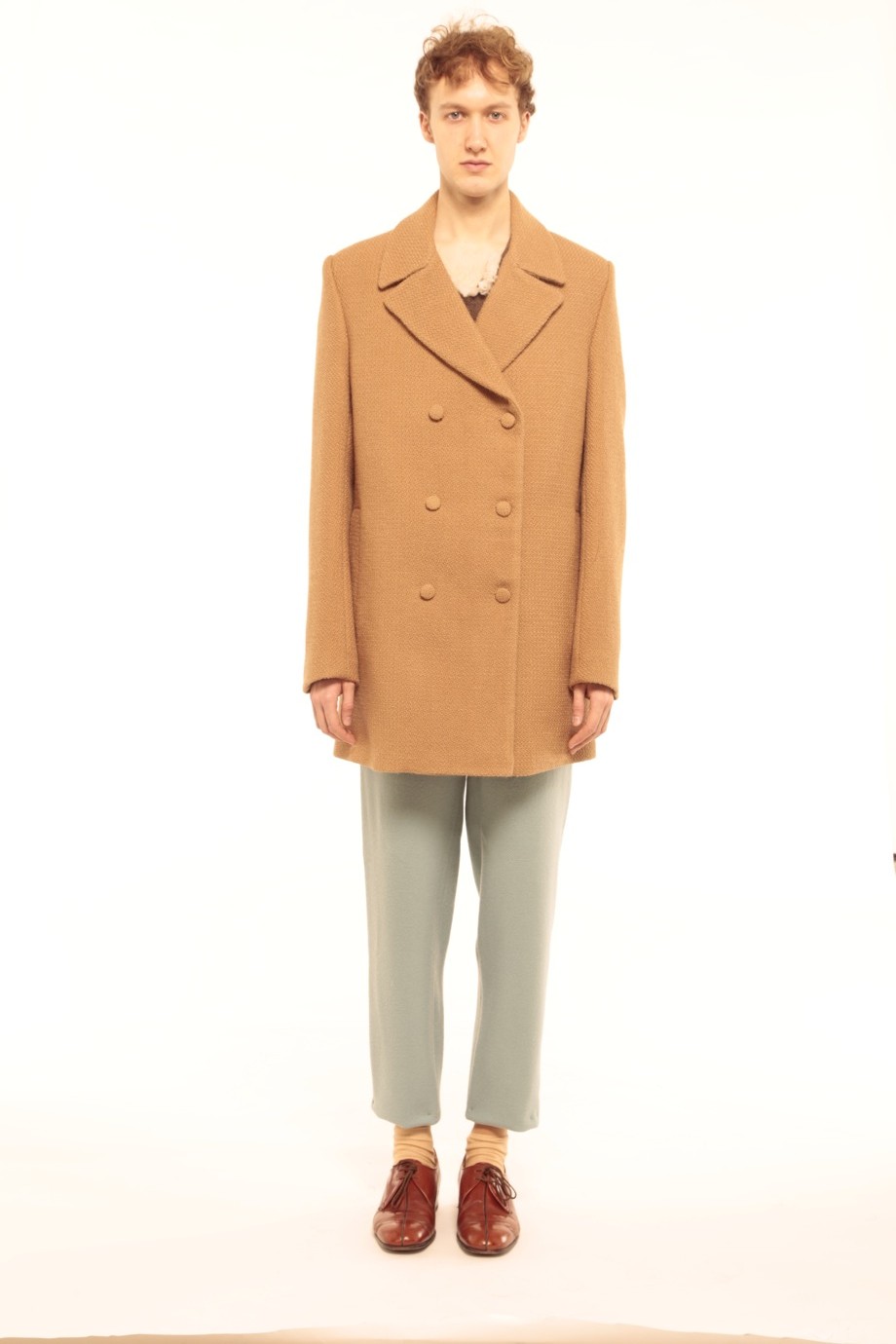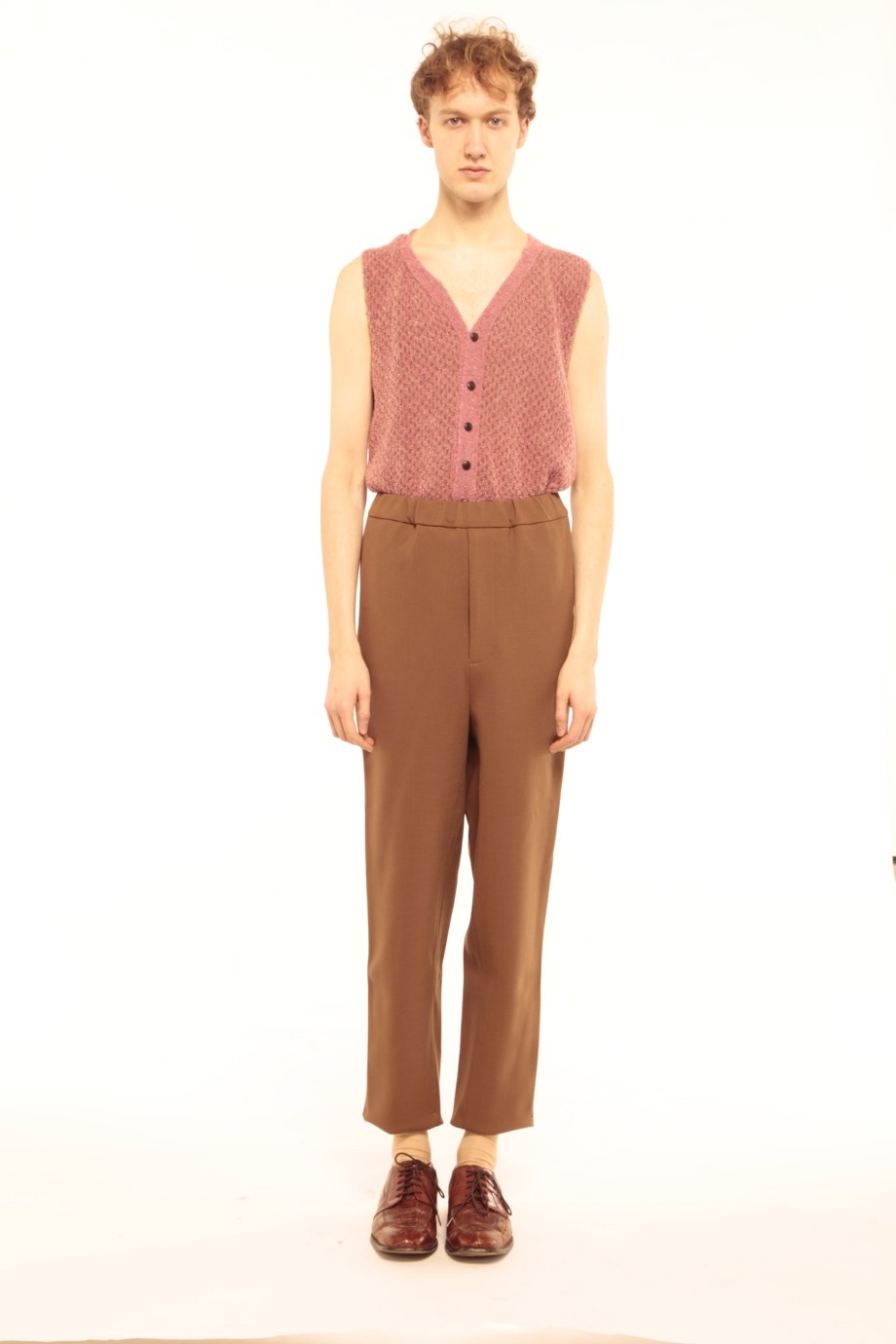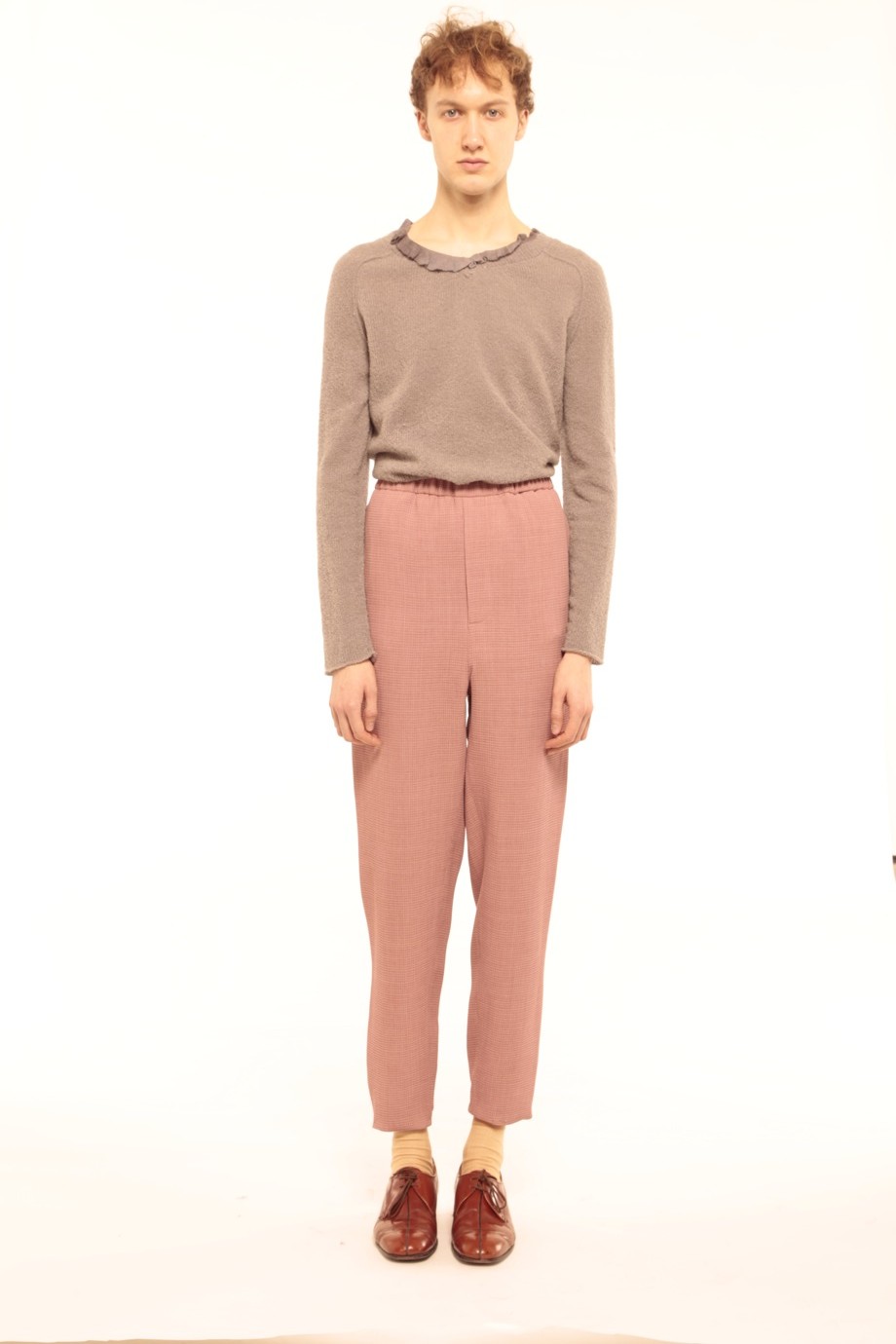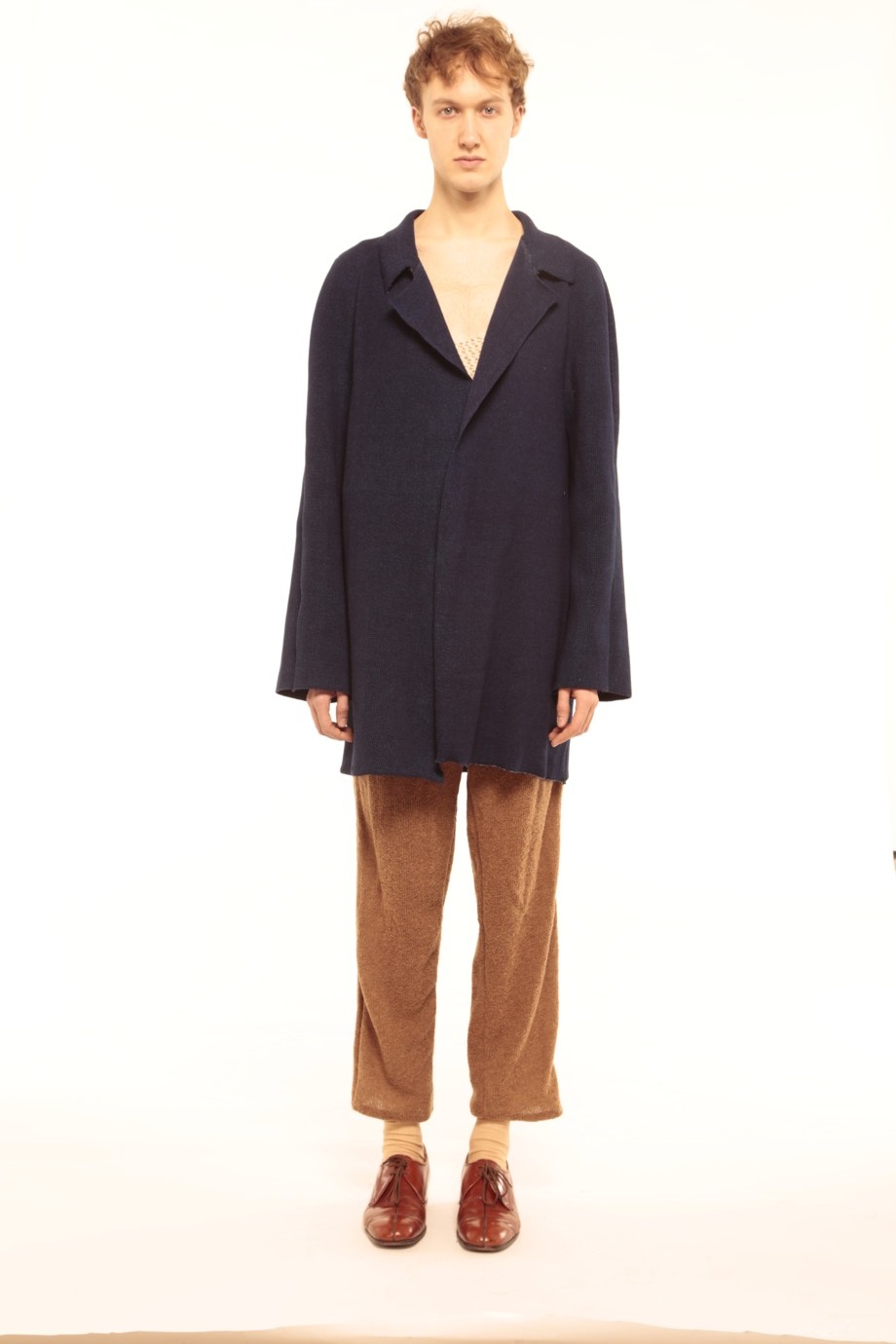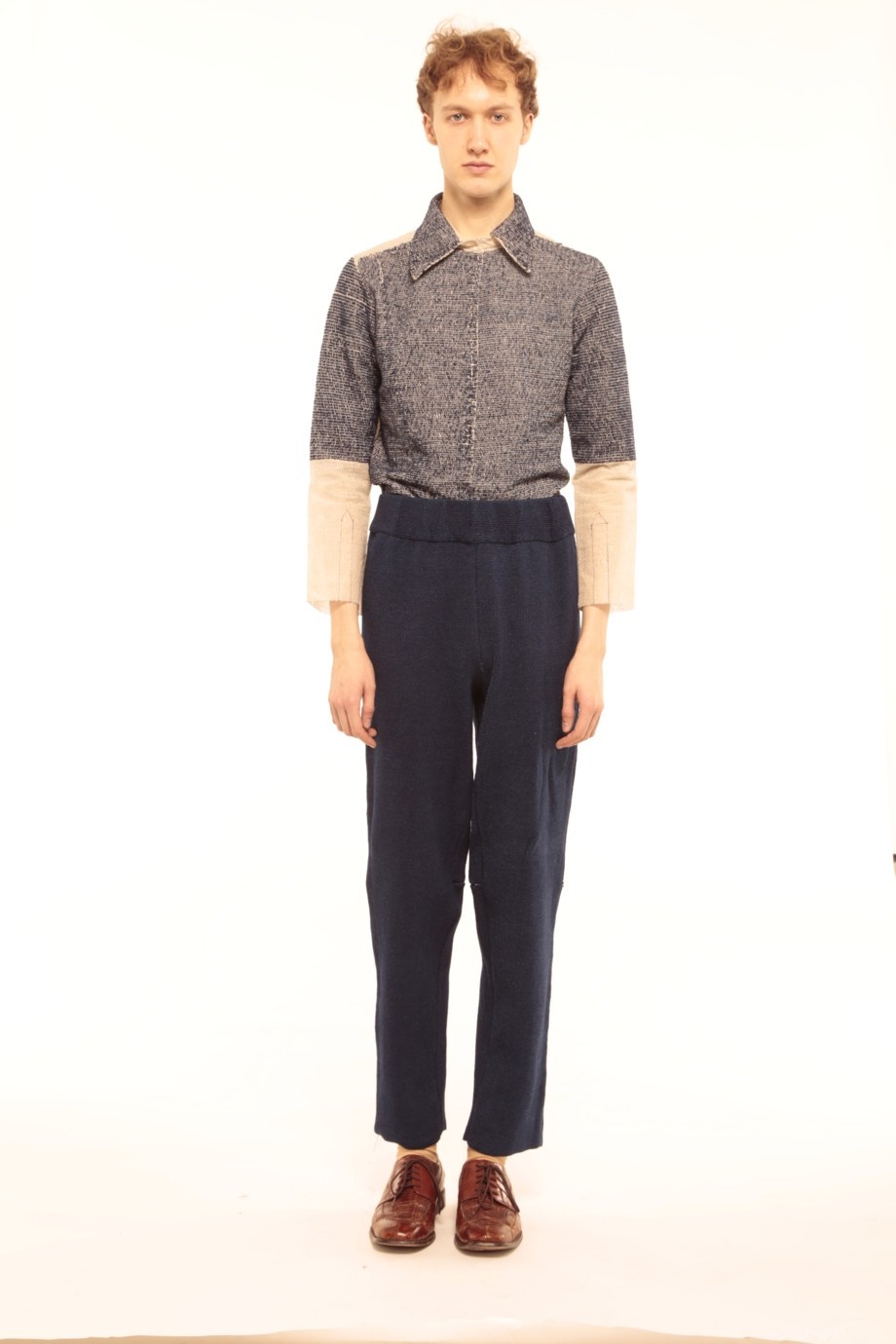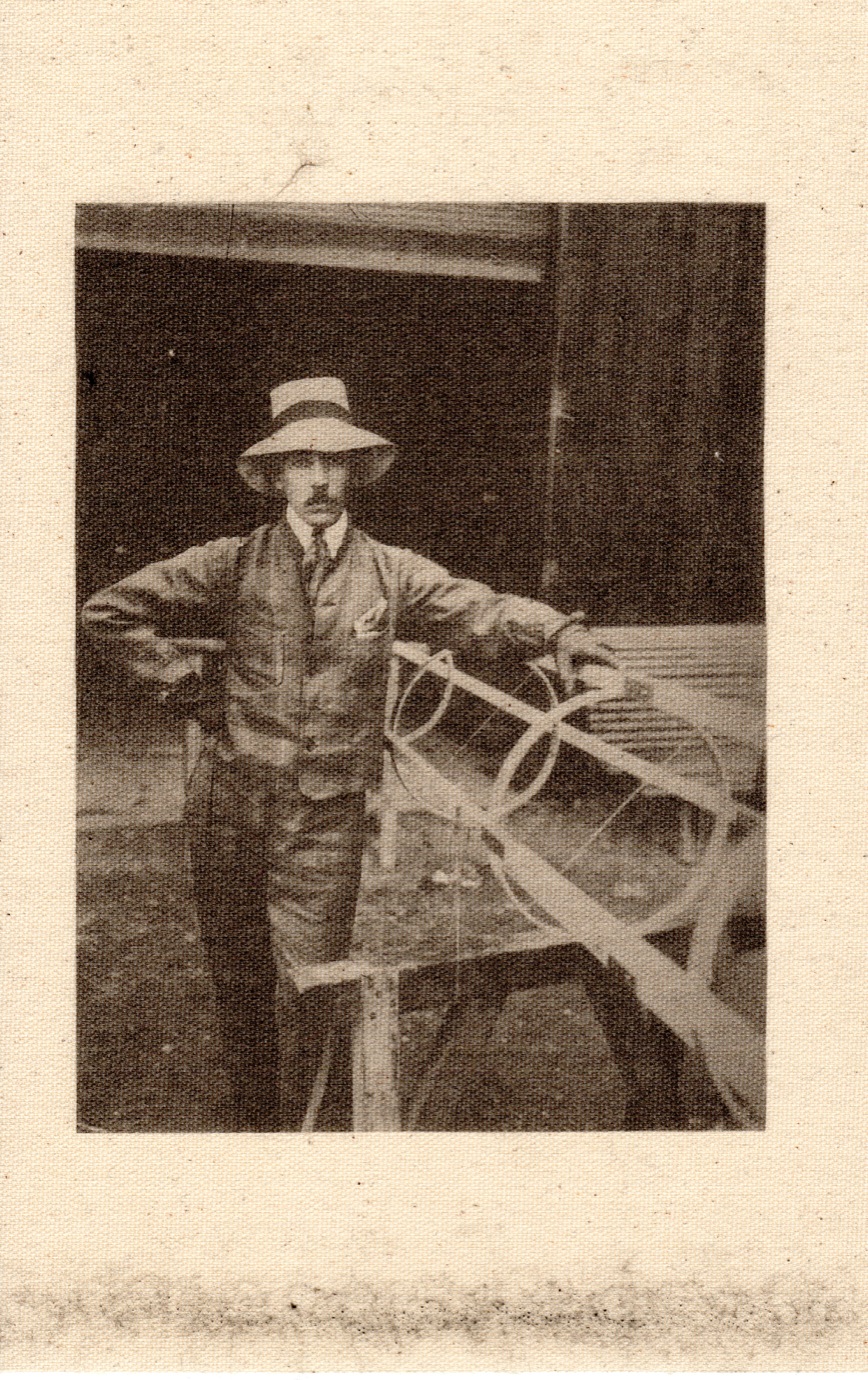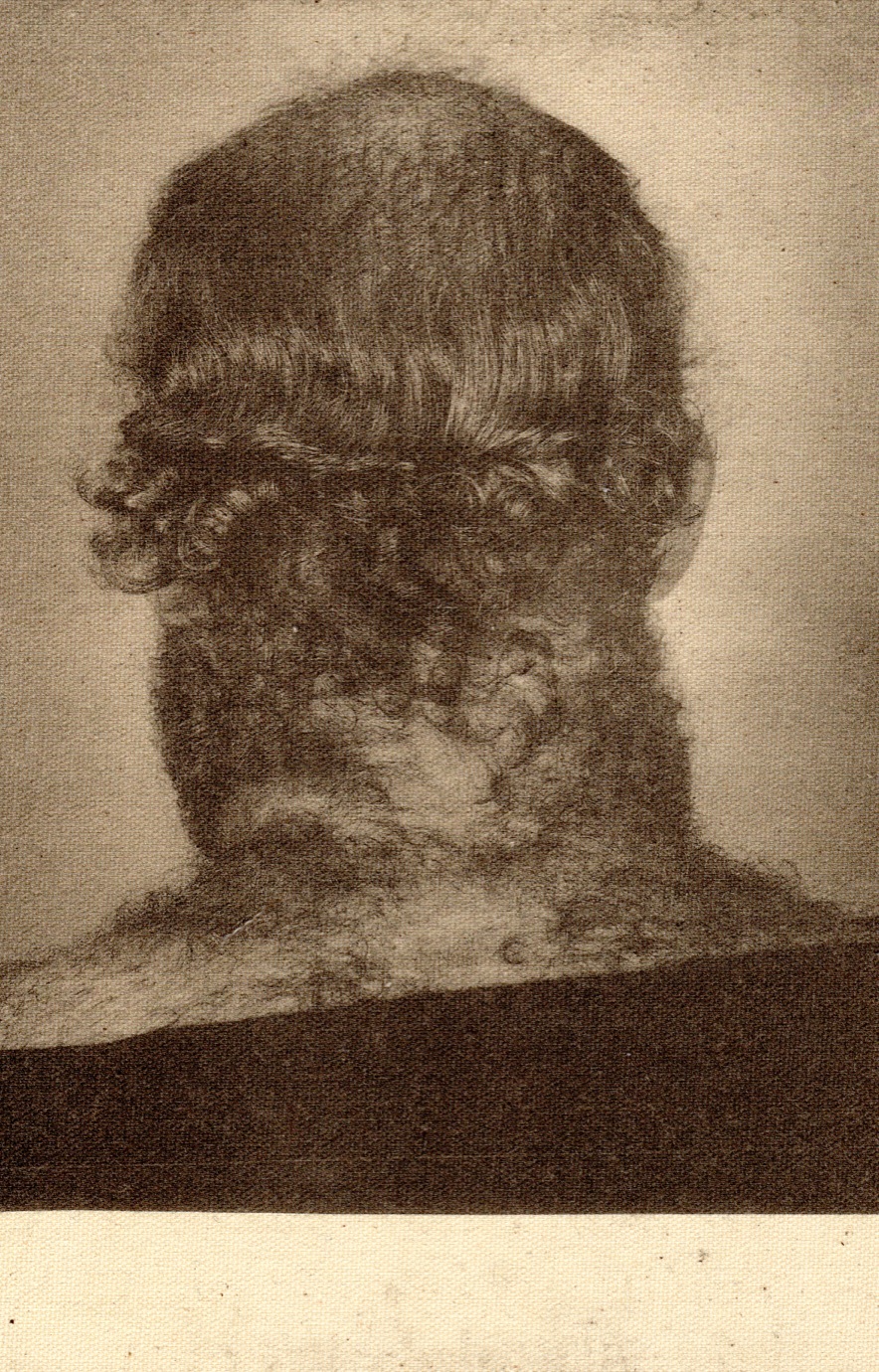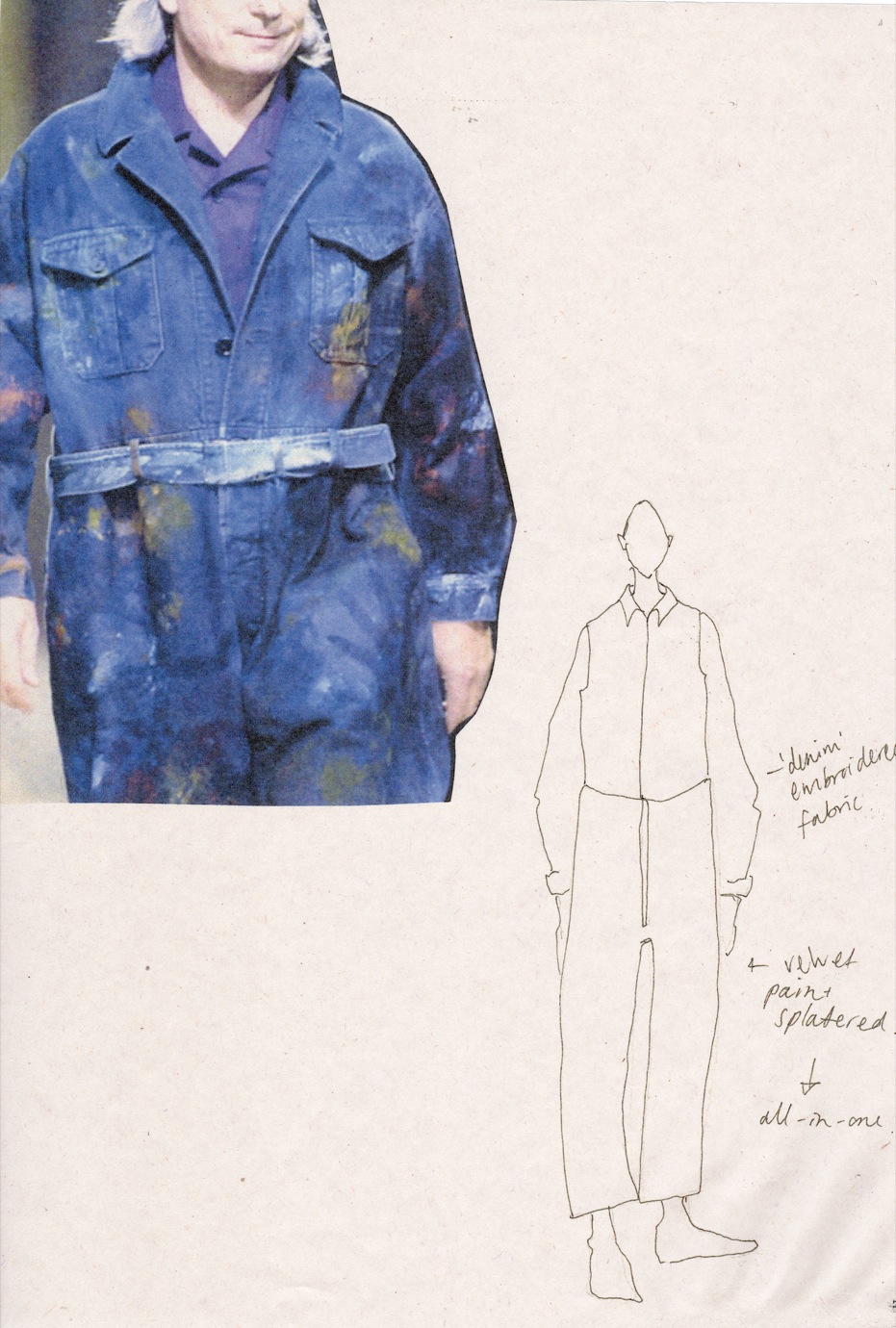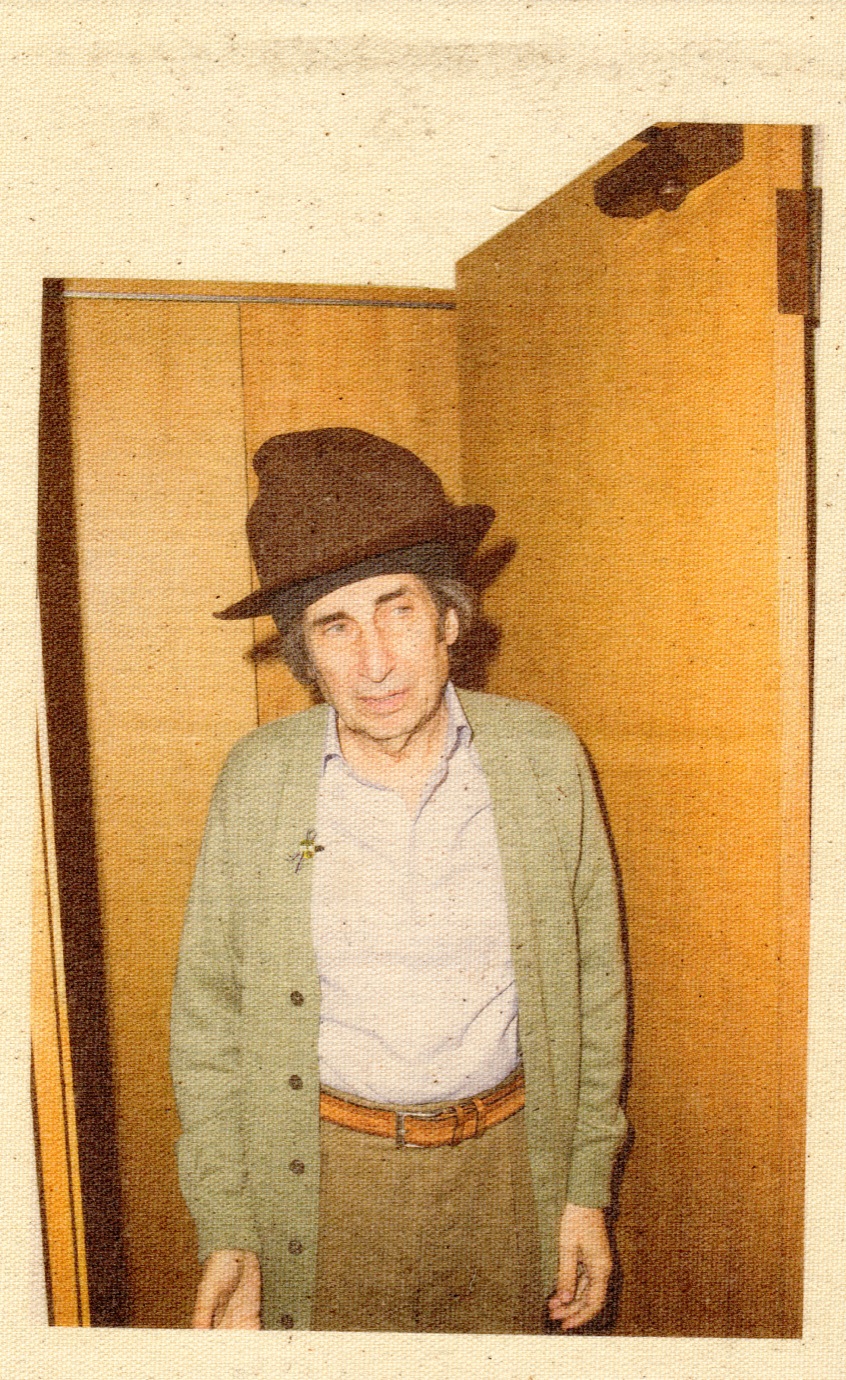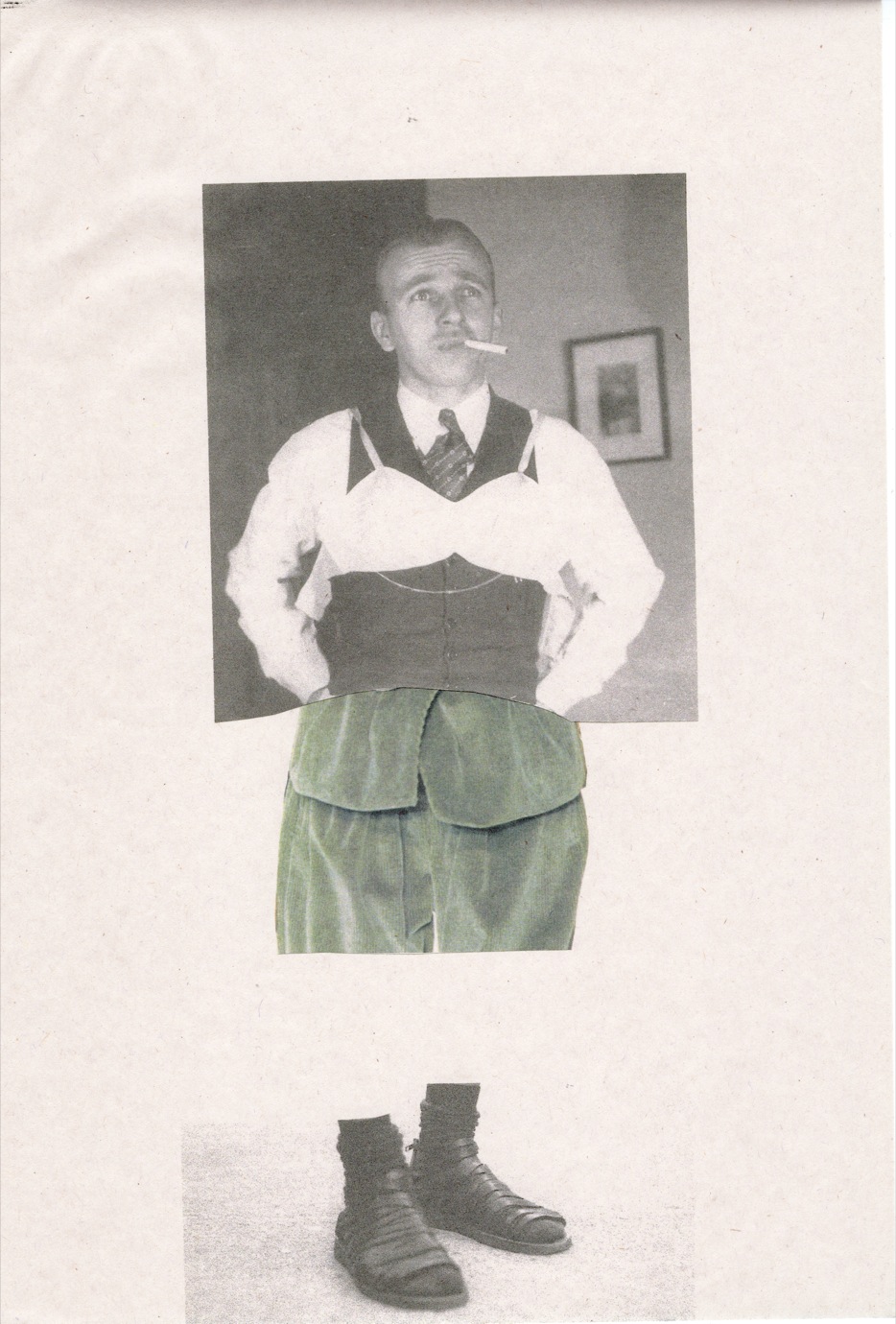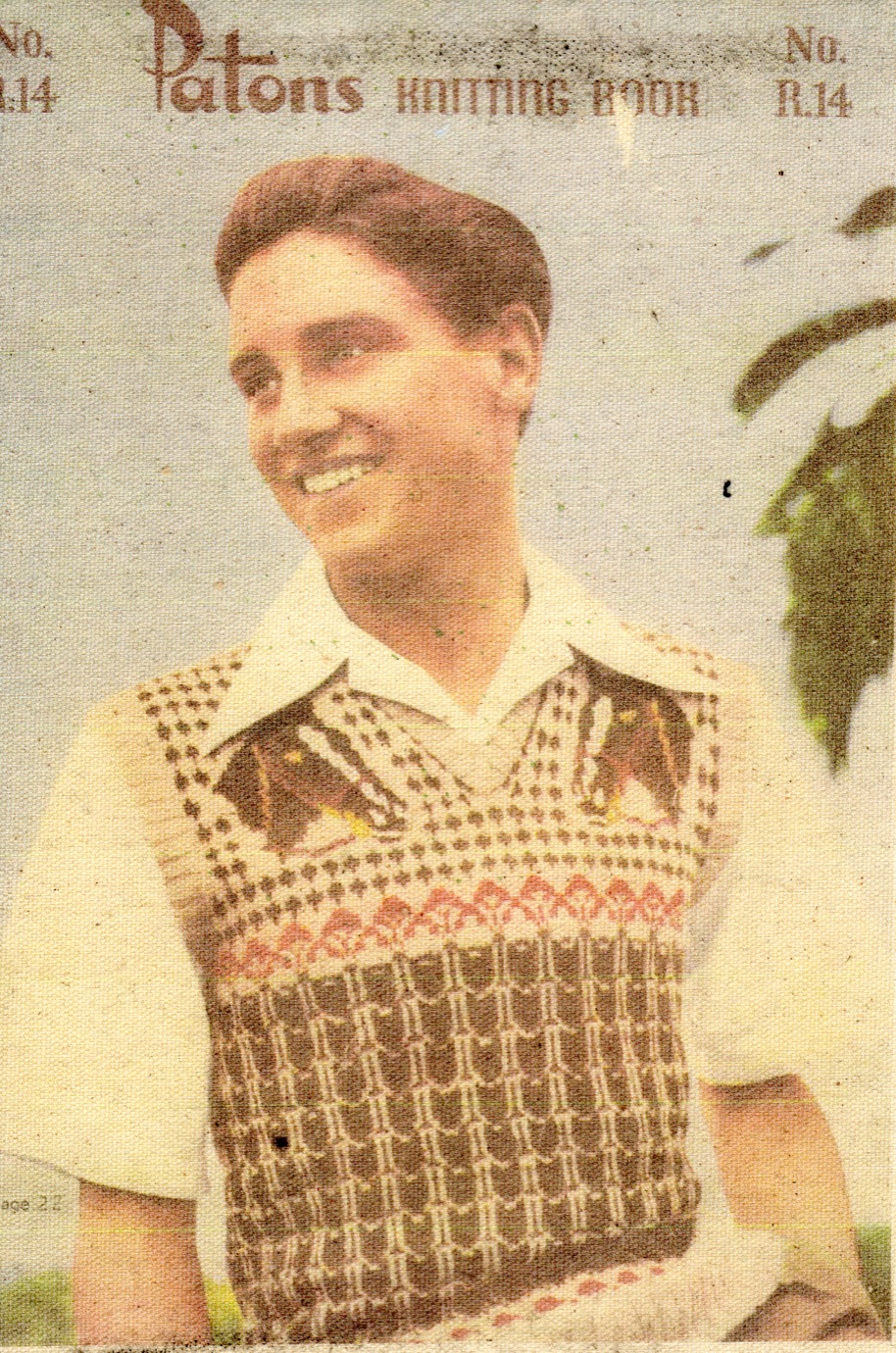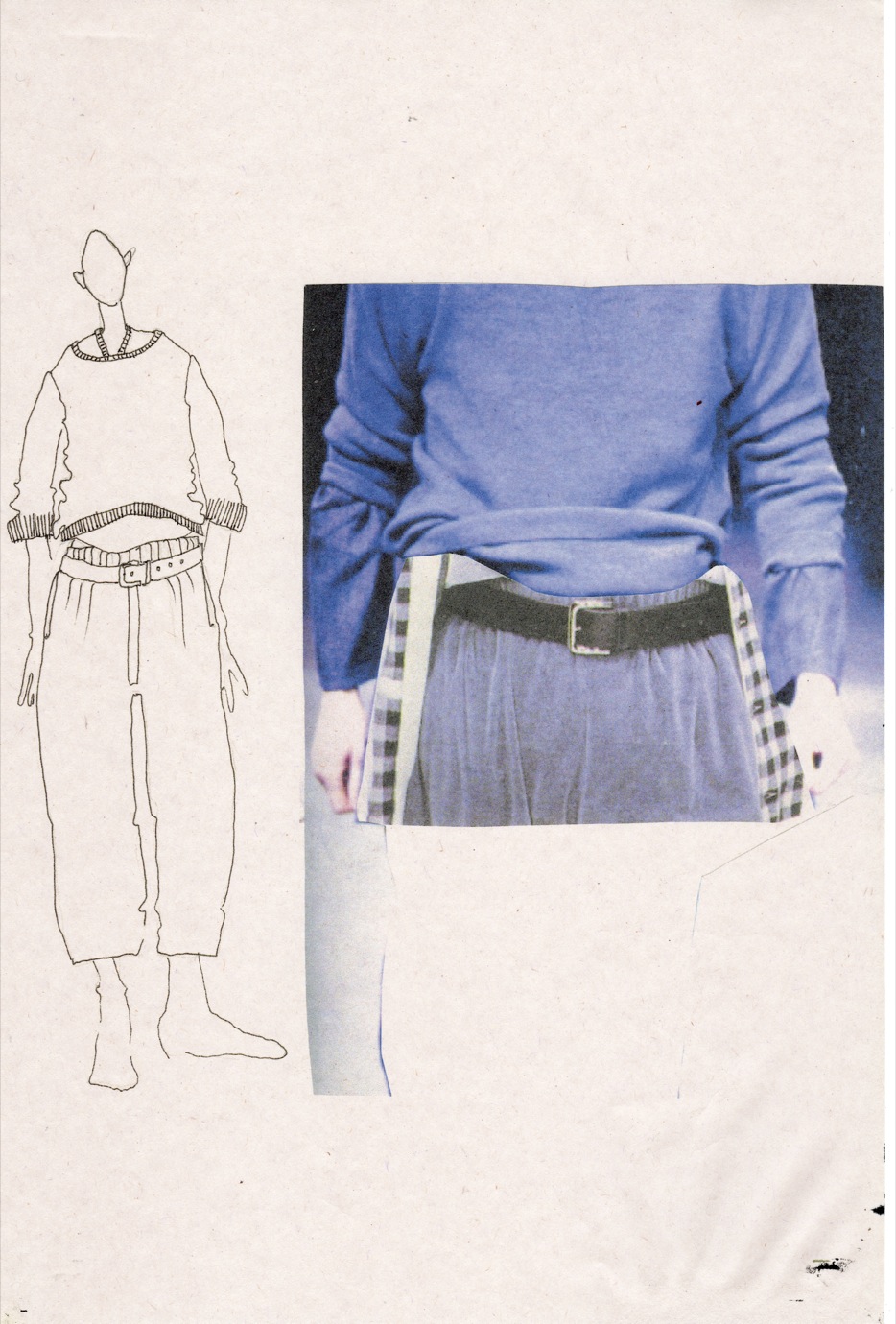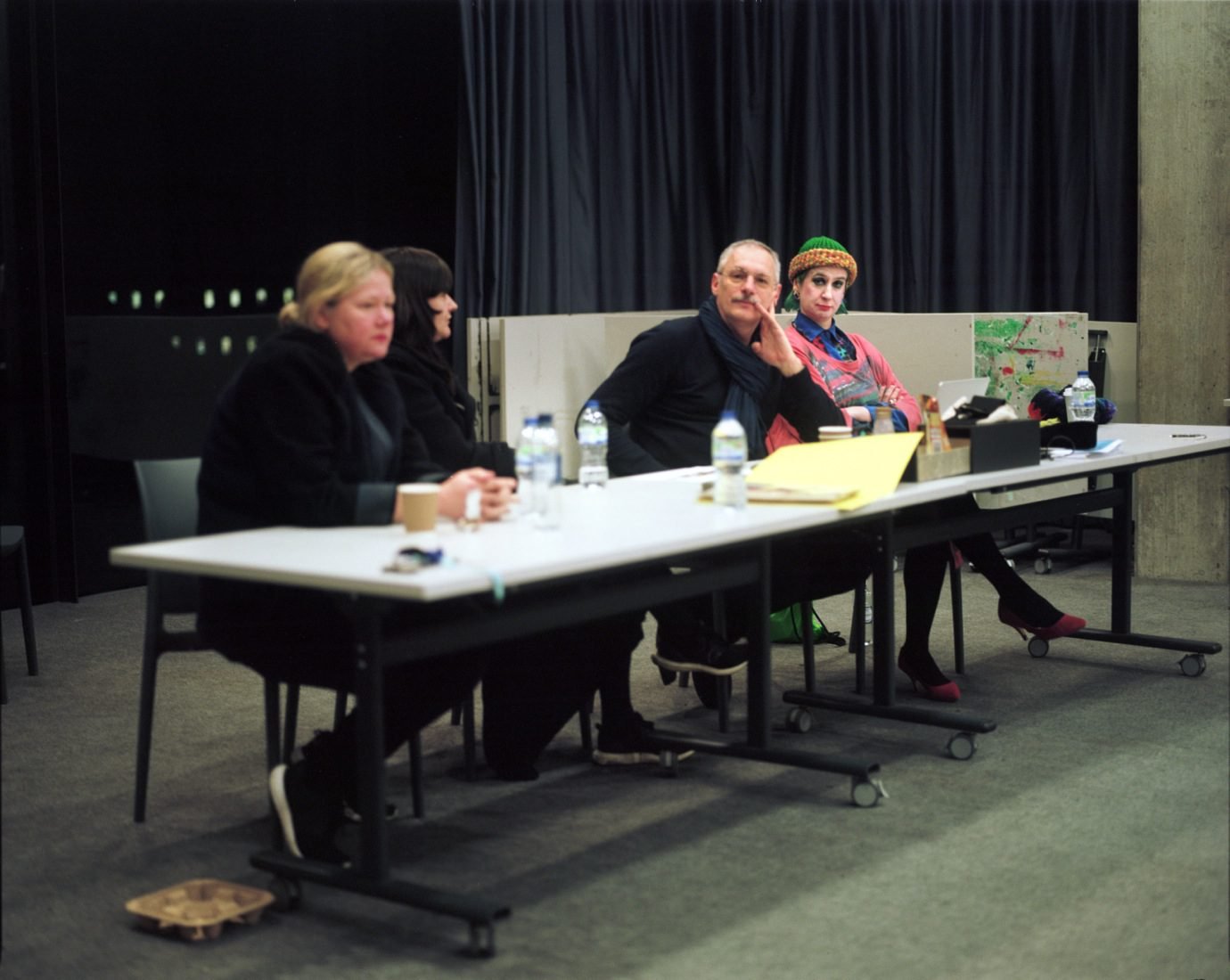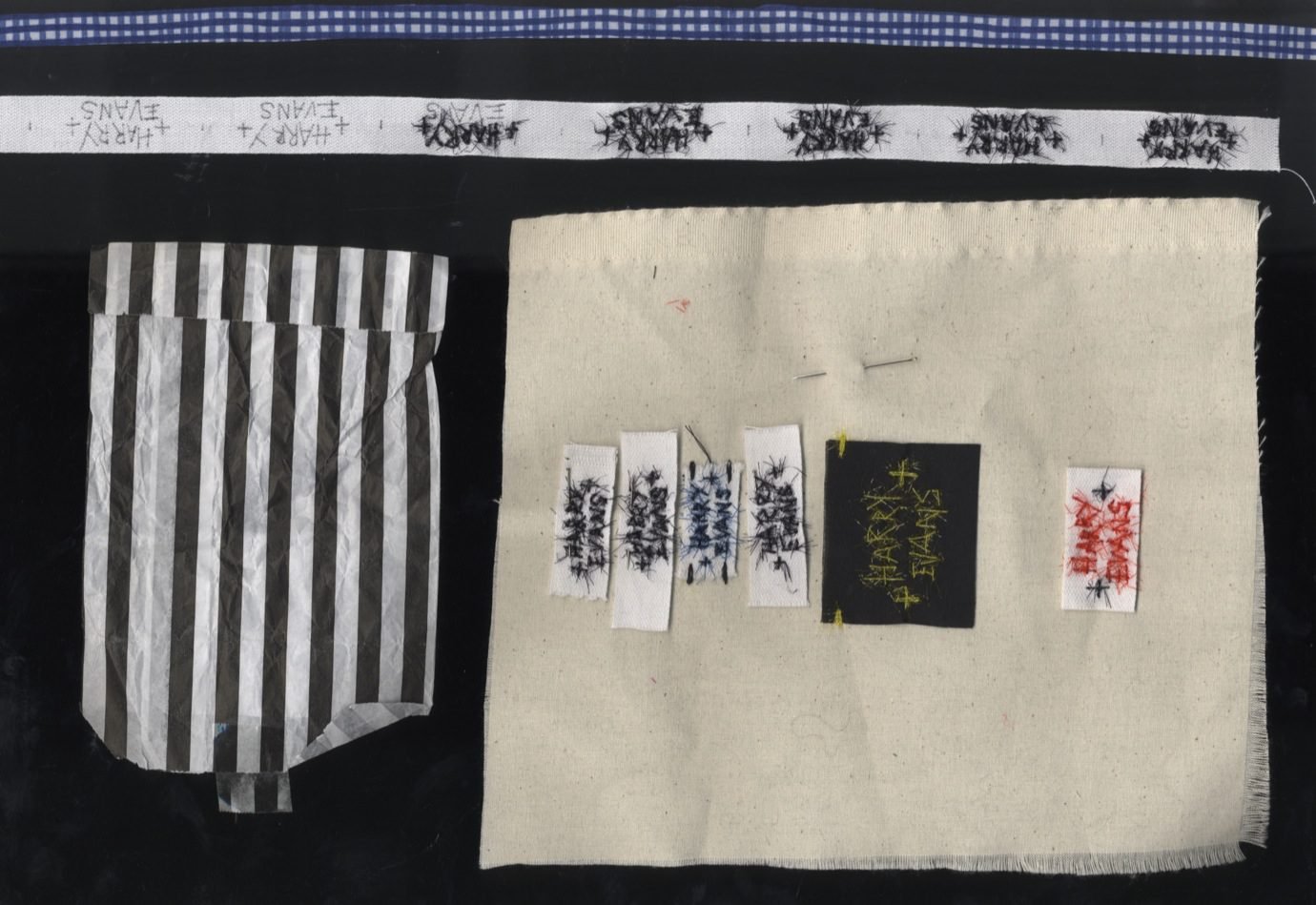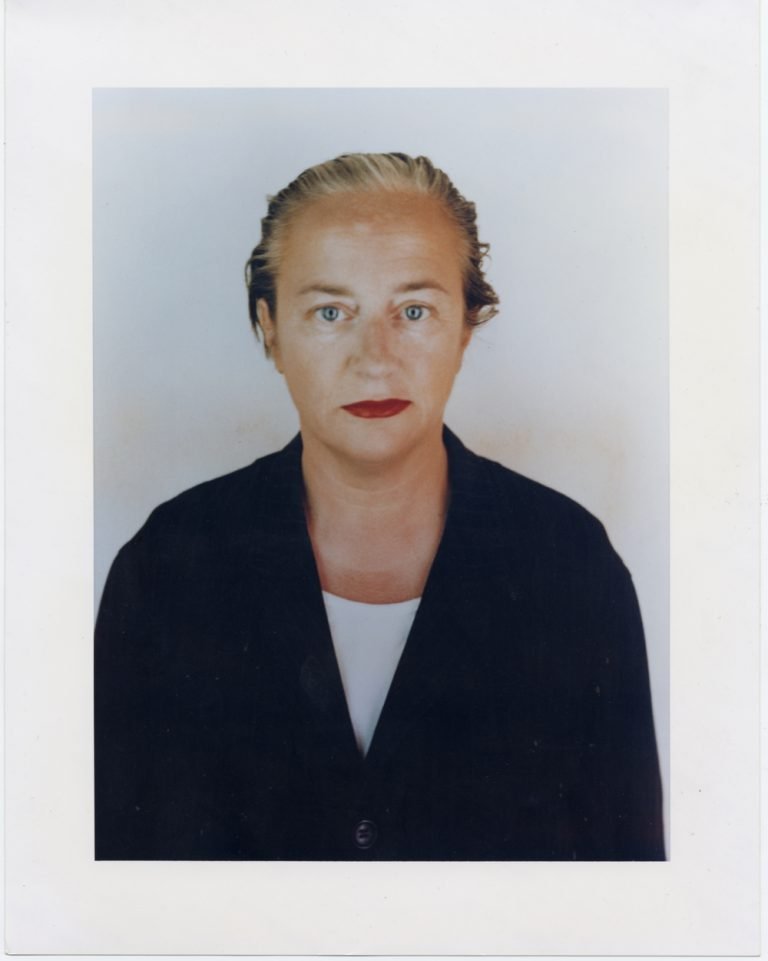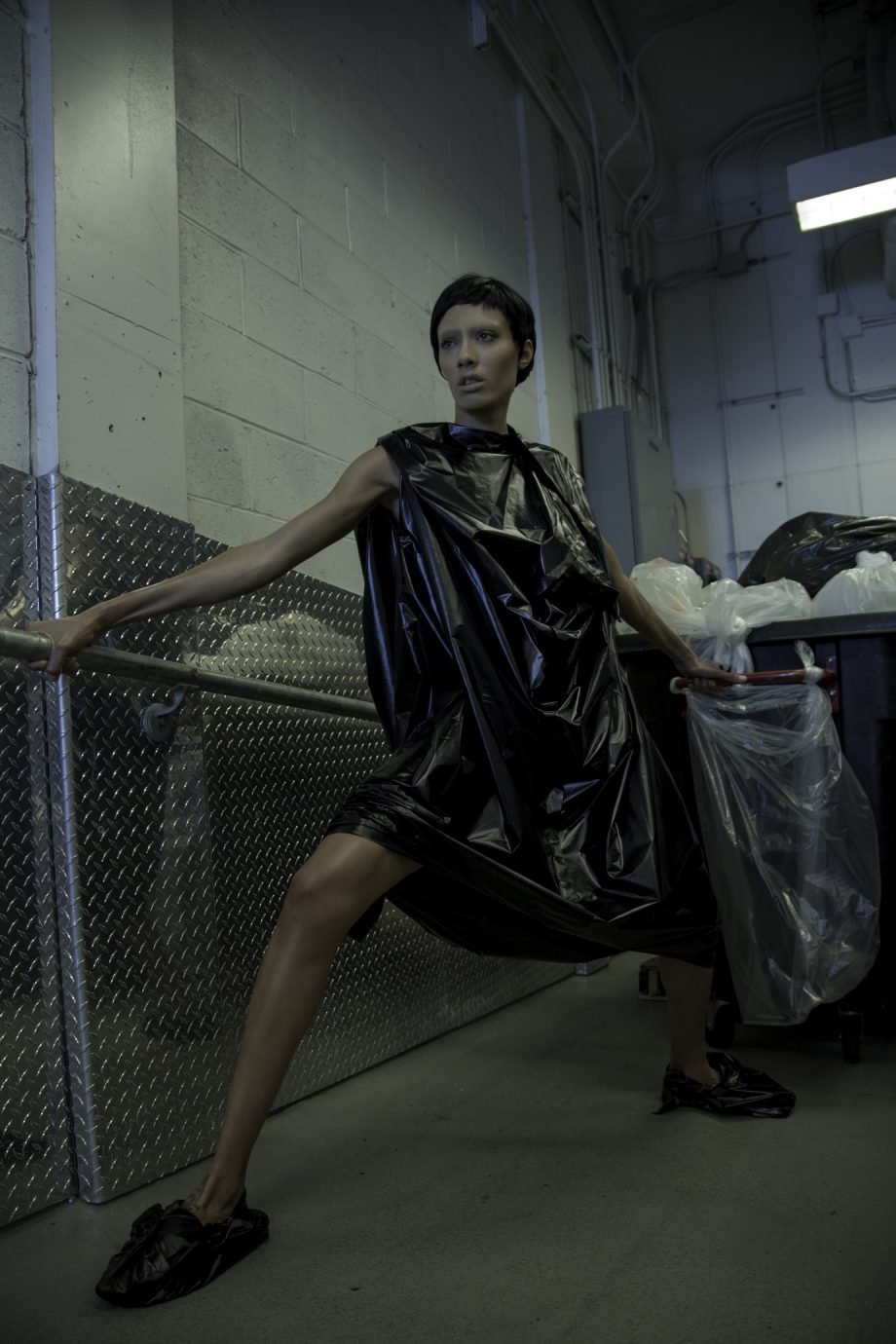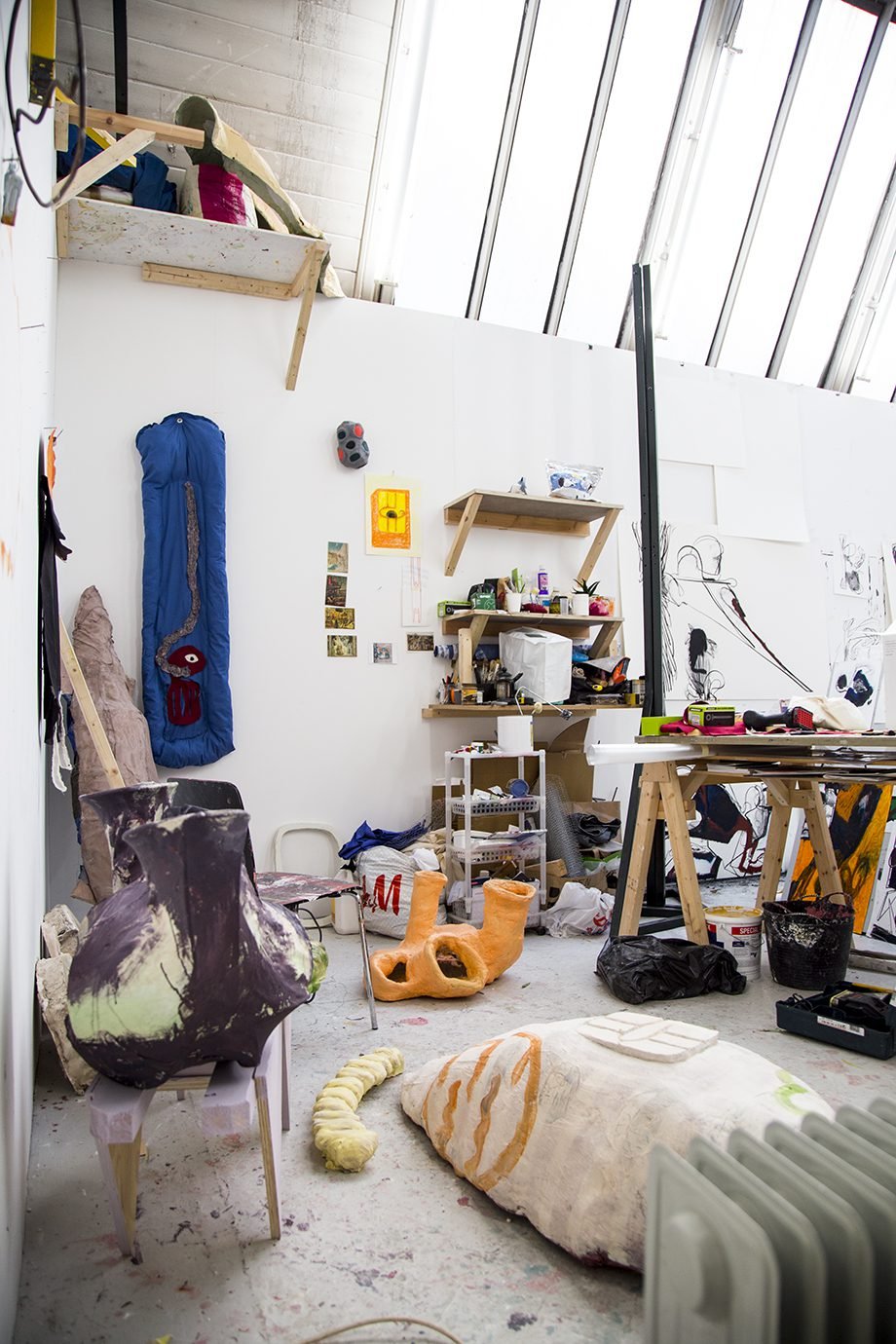Initially, Tracey’s research process does not seem particularly different to that of any other designer. Drawing inspiration from everyday life, she enjoys cooking, reading, travelling, and taking walks around Petersham Nurseries and Richmond Park. She looks at both contemporary and historical art periods, and frequently visits various exhibitions and galleries in and around London, such as the Photographer’s Gallery and the Royal Academy of Arts.
Researching for Subverted Tradition, Tracey mostly looked at photography from the 1950s and 1960s — specifically Bill Brandt — and explored the work of Surrealist artists such as Man Ray, who often created pieces that are not immediately understood, and which ask something of the viewer. She also investigated vintage pattern books for knitting, as she likes the oddity and weirdness of these images. With traditional knitting books, Tracey focuses on looking at the actual garments and thinking about ways to interpret it in a more contemporary and modern way.

